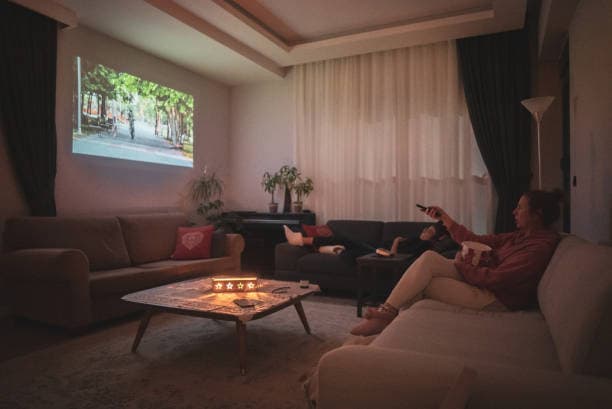
Script to Cinema: Unveiling the Artistry of Filmmaking and Film Production
Movies have the power to take us to other places, induce fear, laughter, or tears. But the journey from concept to big screen is arduous and drawn out. To learn more about how movie magic is made, we will delve into the intriguing world of filmmaking and movie directing in this article.
Scenario: the beginning of the journey
Every movie starts with a screenplay since it serves as a conduit between the original concept and the final product. It’s a trip that begins with a straightforward idea and culminates in a comprehensive blueprint for a feature film. Let’s examine each phase of this trip in more detail.
From idea to script
- Conceptualization
The queries “What is this movie about?” “What is its main theme and message?” and “Who are its main characters?” are among the first ones screenwriters pose. Formulating the film’s central idea and establishing its genre, narrative framework, and cast of characters are all part of conceptualization. Screenwriters experiment with various storylines and concepts throughout this brainstorming and first draft phase.
- Writing the script
The meticulous crafting of the script starts as soon as the notion is accepted. This procedure include character dialogue, in-depth explanations of every scene, and guidelines for the director and cameraman for the best ways to capture specific shots. Screenwriters now strive to craft an engrossing and captivating story that will hold the audience’s attention from start to finish.
- Editing and revision
After the screenplay’s initial draft is finished, editing and refinement take place. This could entail rearranging the events in a different order, introducing new characters, or eliminating ones who don’t advance the plot. At this point, it’s crucial to assess each and every part of the script to make sure the plot makes sense, the characters grow, and pivotal scenes successfully convey the movie’s idea and message. Before a script is deemed ready, it often goes through multiple rounds of editing.
Transforming a script into a visual story
After the screenplay is finished, the director takes over the production and turns the written words into a visual narrative. A deep comprehension of both the story and the technical components of filmmaking are necessary for this stage of the process. Let’s examine the main components of this procedure in more detail.
Script visualization
- Creating a Storyboard
A collection of drawings or photos that correspond to each scene in a film is called a storyboard. It enables the director and his crew to plan ahead for scene changes, camera movements, and shot composition. A storyboard is an essential tool for conveying the director’s visual concept to the crew and for streamlining problem resolution and optimising time spent on site.
- Cast Selection
Since actors are the ones who give the script’s characters life, choosing the right cast is essential. The director must ensure that every performer is appropriate for the part and capable of bringing the character to life in all respects. This calls for a thorough comprehension of the narrative, the characters, and the capacity to recognise the performers’ potential.
- Choosing locations and creating sets
The movie’s setting and locations help to fully immerse the audience in the narrative. Every element of the film contributes to the overall ambiance thanks to the meticulous site selection and set design work done by the filmmaker and his team. If the crew cannot find a suitable place, they can construct elaborate sets themselves.
The filming process
One of the busiest and most exciting times in the movie-making process is the filming process. This is the point at which written concepts and screenplays become tangible. Let’s examine the main facets of the filming procedure in more detail.

Working on set
On a movie set, there is a defined plan for each day. This plan — often referred to as a shooting schedule — specifies which actors will be in the scenes, which order they will be filmed in, and what kind of equipment or sets will be required. The weather (for outdoor shootings) and the ease of transportation between sites are just two of the many variables that affect the timetable. With the high expense of production, making the most out of every shooting day is essential.
Technical aspects
The team must exhibit extreme professionalism and pay close attention to detail when it comes to the technical aspects of filmmaking. Contains:
- Selecting appropriate gear and lenses for every scene when it comes to cameras. Choosing the right camera and lens can change the overall look of the film as well as how the characters and surroundings are viewed.
- Lighting: A scene’s lighting is crucial to establishing the correct tone and ambiance. It can intensify the tension in a scene or soften and enhance its beauty. To correctly showcase characters and scenery, lighting work takes both artistic and technical skills.
- Sound: Clear, high-quality on-location recordings of background noises that give scenes depth and authenticity, as well as dialogue, are crucial. To get the intended impression, a variety of microphones and recording techniques are employed.
Interaction with actors
The director is crucial in guiding the performers, assisting them in comprehending the complexity and drive of their roles. Talking about the script, breaking down character behaviour nuances, and honing the sincerity of emotional responses are all part of this. Finding common ground and empathy are key when interacting with performers so they may inhabit their characters as naturally as possible. The director is responsible for inspiring the actors and fostering an innovative and positive environment on the set.
Post-production: from raw material to finished product
The crucial phase where unfinished film is transformed into a finished film is post-production. It consists of various significant processes, including:
- Montage
The best shots are chosen at this point and combined by editors to construct a series of scenes that tell the movie’s narrative. The narrative’s cadence and rhythm, as well as the audience’s emotional reaction, are all influenced by editing.
- Color correction and special effects
While special effects add features not possible to achieve while filming, colour grading gives the movie a cohesive visual style. These procedures improve the visual experience and contribute to a more comprehensive presentation of the work’s theme and ideas.
- Sound design
Comprises the incorporation of sound effects, music, and dubbing as needed. The soundtrack makes the film more expansive and rich by enhancing the sights and deepening the emotions.
Conclusion
A lot of creative individuals must work together to complete the intricate and multi-step process of making a movie. Every stage, from concept to screenplay to script to screenplay, is significant and distinct. Comprehending this procedure not only enhances your appreciation for the craft of filmmaking but also motivates you to craft original narratives. Cinema is the storytelling art form, and each film is an adventure into a brand-new universe imagined by talent, ambition, and screenplay.